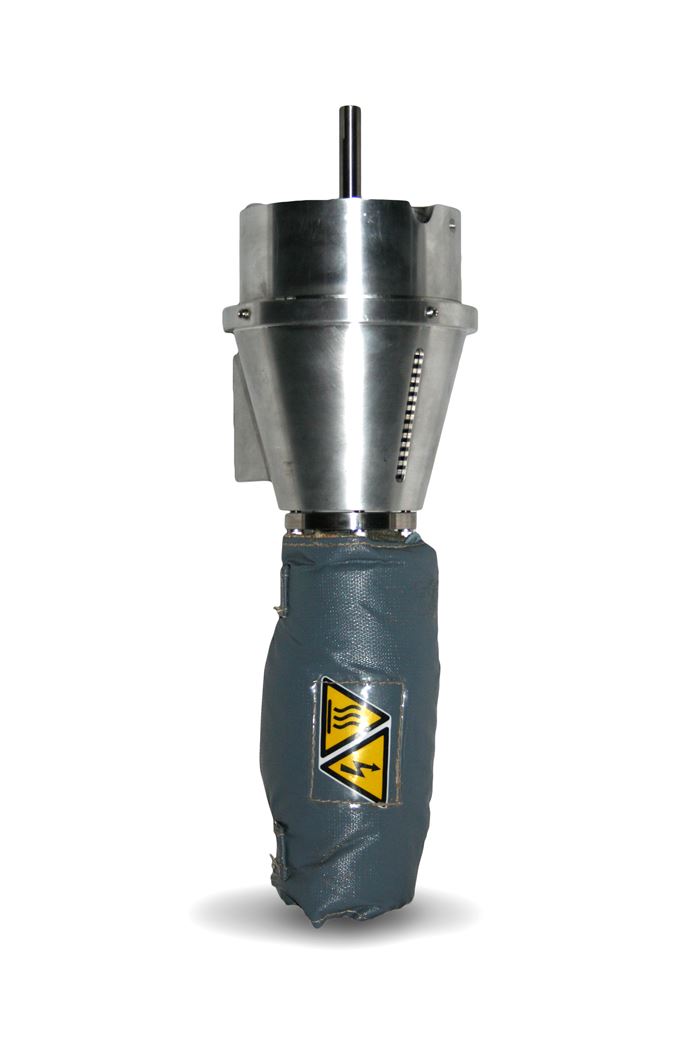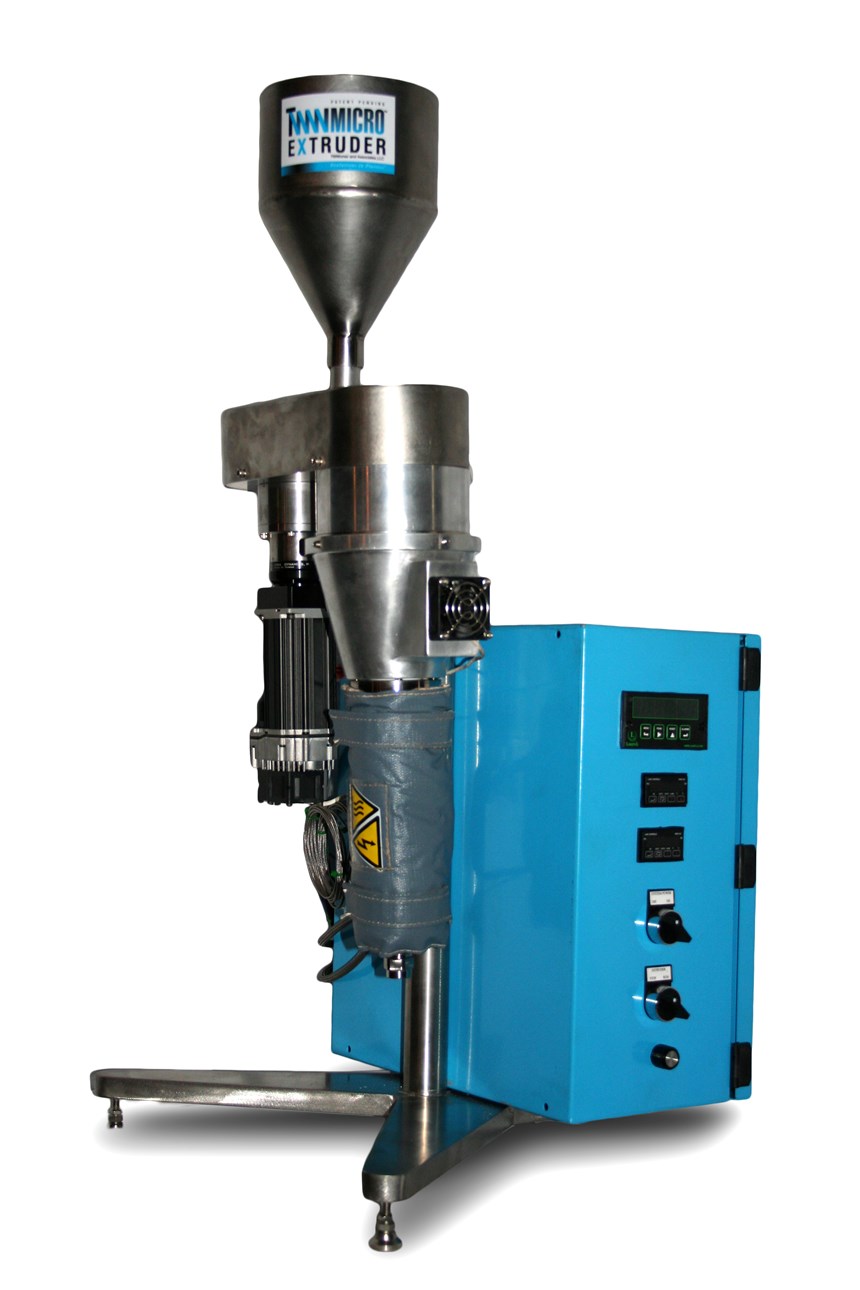Micro Extruder Can Run Normal-Sized Pellets for 3D Printing
Unit can be configured for lab use or mounted on a 3D gantry for 3D printing
A new micro extruder for 3D printing is believed to be the first machine of its size that can process standard-sized pellets. Developed by Tim Womer of TWWomer & Associates, Edinburg, Pa. and dubbed the TWW Micro Extruder, the patent-pending machine marks the most recent innovation by the well-known consultant in the area additive manufacturing. It can also run micropellets.
For the past four years, Womer has been working with Oak Ridge National Laboratory, Oak Ridge, Tenn., and Cincinnati Inc., Harrison, Ohio, to optimize screw technology on Womer’s TWW Ultra Lite extruder. The TWW Ultra Lite is larger than this new machine, with and a throughput (deposit) rate of 80-100 lb/hr. Roughly 20 TWW Ultra Lite machine are in use on the BAAM (big area additive manufacturing) machines that Cincinnati, Inc. has been furnishing.
The TWW Micro Extruder weighs approximately 15 lb and runs on a standard 120-v/15-a power source. The unit can be configured for lab use or mounted on a 3D gantry for 3D printing. The machine can process a wide range of resins, including carbon-fiber filled ABS and PLA, at throughputs to 20 lb/hr.
According to Womer, the new extruder is the first such machine to use a single vertical conical screw to feed and process standard-size pellets. This design reportedly reduces the extruder’s footprint and weight without sacrificing mixing performance. The screw has a unique helical compressed channel to generate pressurized heat. It feeds, compresses, melts, and mixes quickly and optimally as material passes from the input end toward the output end of the internal channel. According to Womer, current micro-extruders for 3D printing are slow, inefficient and only work with micro pellets.
The extruder is furnished with a nozzle tip, which can be sized depending on the bead size needed to print the part.
In addition to 3D printing, Womer says the TWW Micro Extruder can be used for materials development, testing, STEM (science, technology, engineering, and math) training, and more. Womer says he has shipped several units already.
Related Content
-
KraussMaffei Launches Two Additive Manufacturing Lines at K 2022
Long established in injection molding, extrusion and polyurethane reaction process machinery, 184-yr-old KraussMaffei prepares to enter the industrial additive manufacturing market.
-
420 Stainless Steel Now Qualified With TrueShape 3D Printing Technology
NPE2024: Mantle's Additive Manufacturing Technology is Designed for Precision Tooling
-
Production Tool, Prototype Time
Mantle's metal 3D printing technology targeted toolmaking and injection molders and moldmakers are taking notice.

















